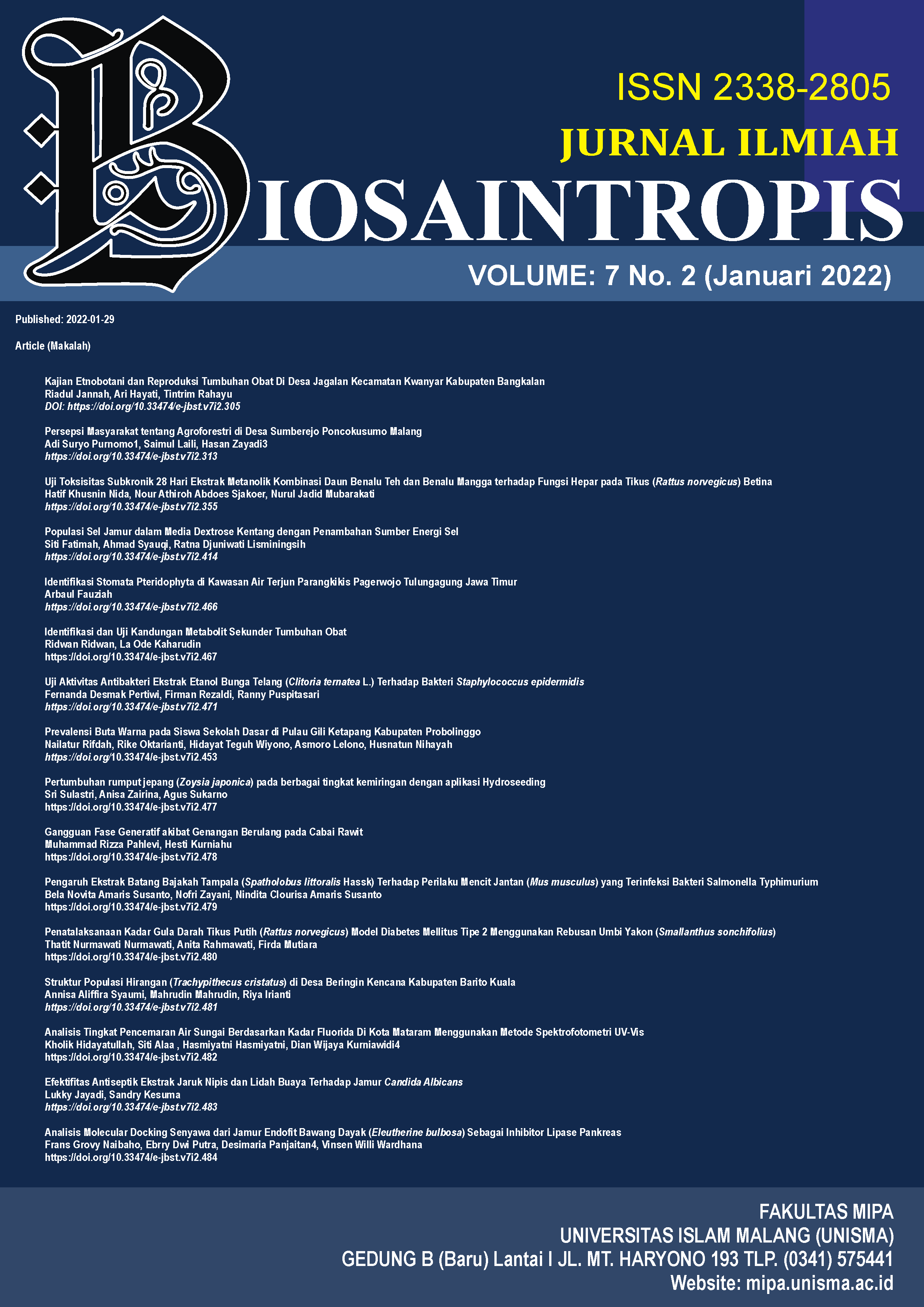Struktur Populasi Hirangan (Trachypithecus cristatus) di Desa Beringin Kencana Kabupaten Barito Kuala
Main Article Content
Abstract
Beringin Kencana is a village located in Barito Kuala Regency, South Kalimantan Province. The Beringin Kencana area contains mangrove areas, swamp forests, rice fields, settlements and oil palm plantations. The Beringin Kencana area, which is located on the border of the Barito Kuala and Central Kalimantan regions, is an area that has not been widely publicized, especially the diversity of flora and fauna that exist, so it needs to be introduced to the public widely. The results showed that the population of Hirangan in Beringin Kencana Village was obtained from adults 2.61 individuals/Ha, young 1.07 individuals/Ha and tillers 1.90 individuals/Ha. Pyramid on the population structure of hirangan in Banyan Kendi village is in the form of an urn/kendi. Pyramid shaped caddy shows that the number of young people is less than the number of adults.
Article Details

This work is licensed under a Creative Commons Attribution 4.0 International License.
Copyright and Attribution:
Jurnal Biosaintropis (Bioscience-Tropici s licensed under a Creative Commons Attribution-NonCommercial 4.0 International License (CC-BY). The work has not been published before (except in the form of an abstract or part of a published lecture or thesis) and it is not under consideration for publication elsewhere. When the manuscript is accepted for publication in this journal, the authors agree to automatic transfer of the copyright to the publisher.
Permissions:
Authors wishing to include figures, tables, or text passages that have already been published elsewhere and by other authors are required to obtain permission from the copyright owner(s) for both the print and online format and to include evidence that such permission has been granted when submitting their papers. Any material received without such evidence will be assumed to originate from one of the authors.
Ethical matters:
Experiments with animals or involving human patients must have had prior approval from the appropriate ethics committee. A statement to this effect should be provided within the text at the appropriate place. Experiments involving plants or microorganisms taken from countries other than the authors™ own must have had the correct authorization for this exportation.

